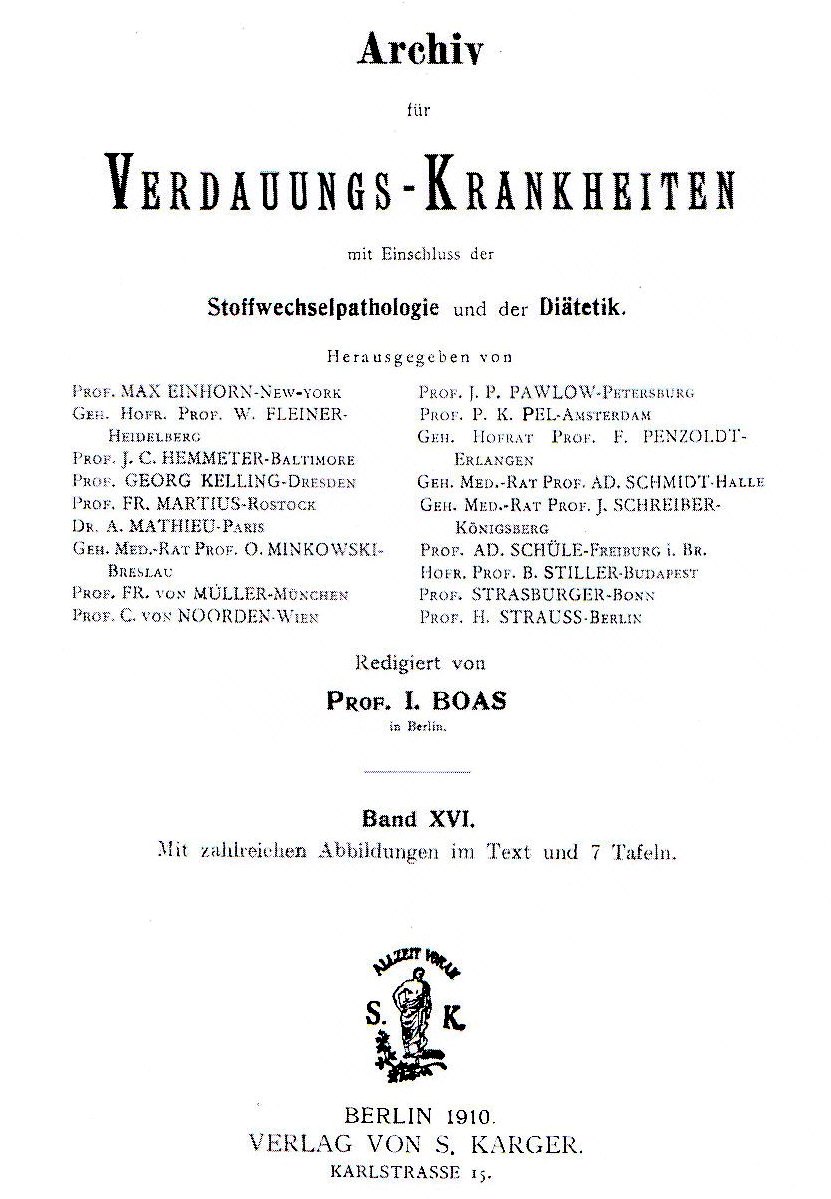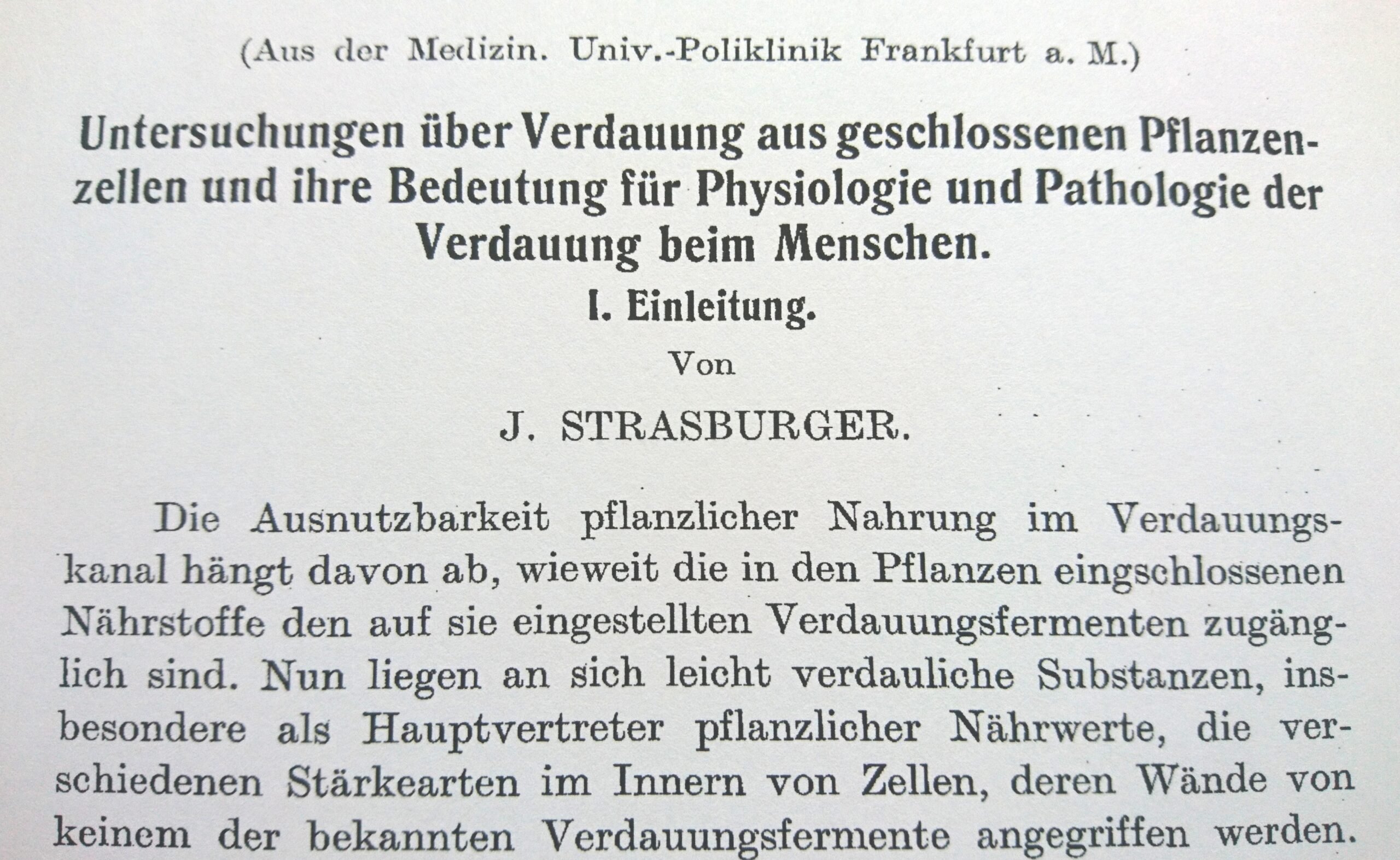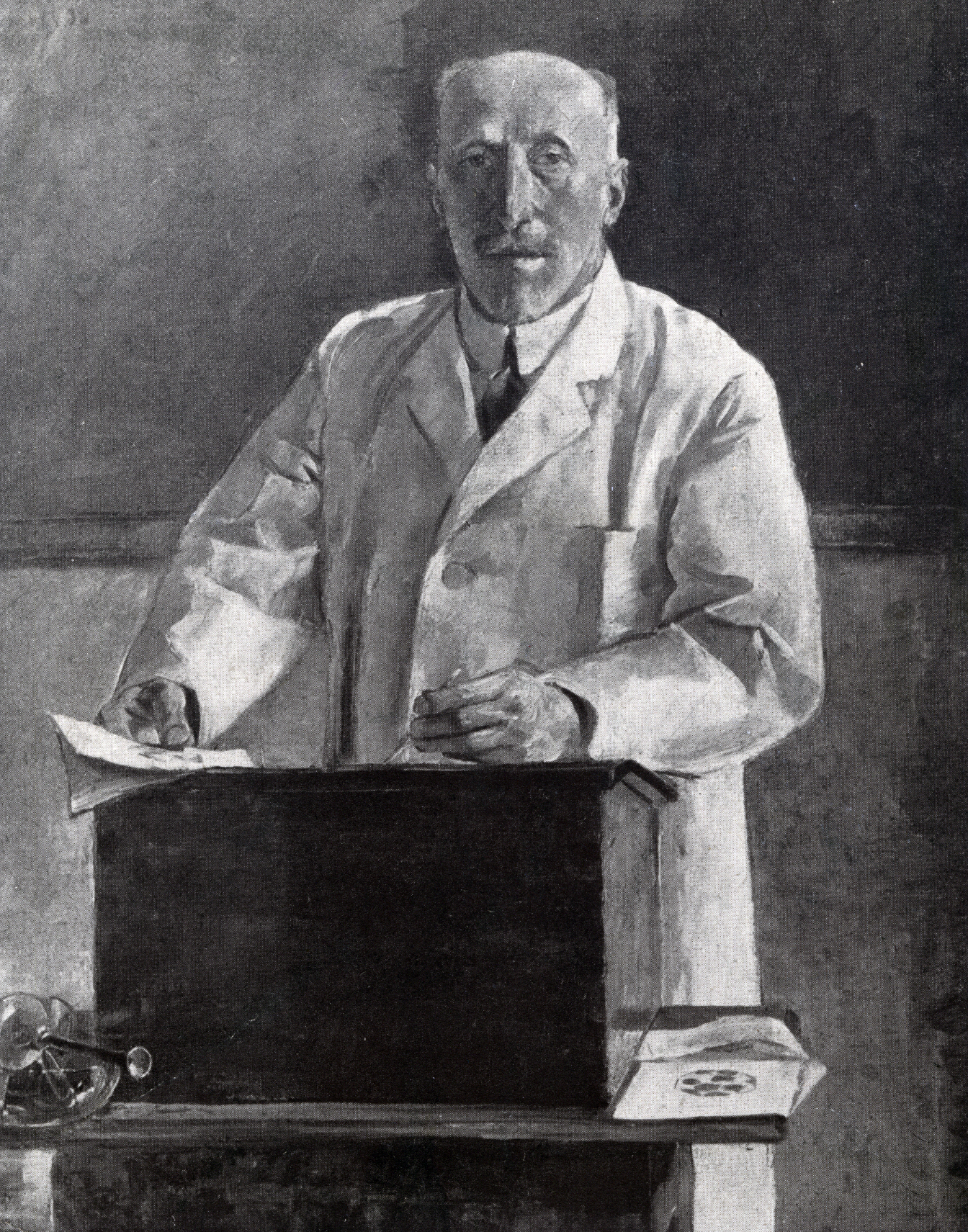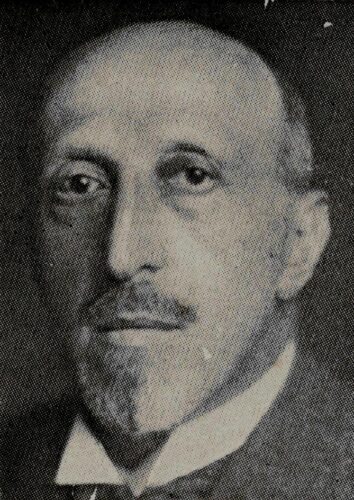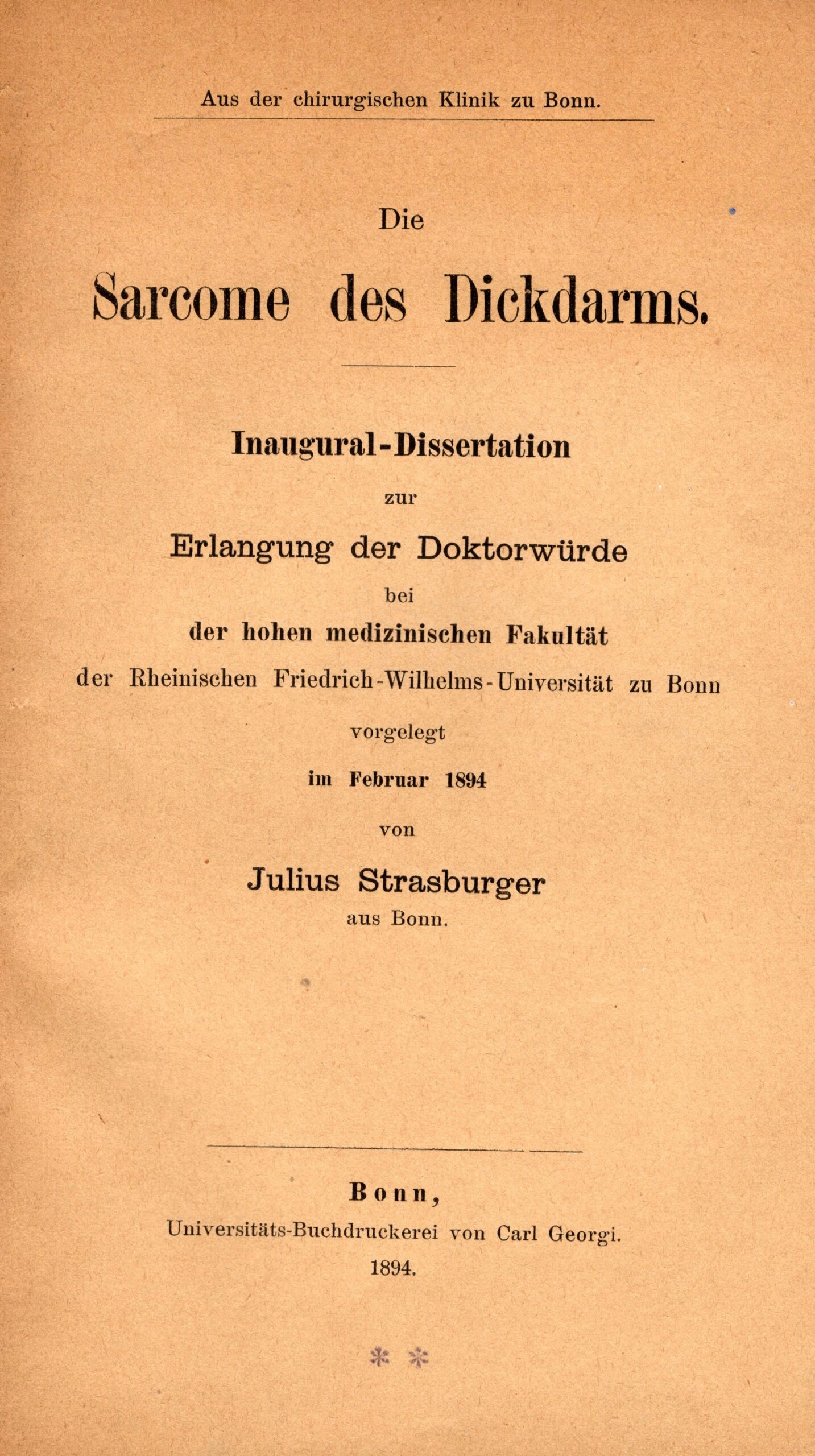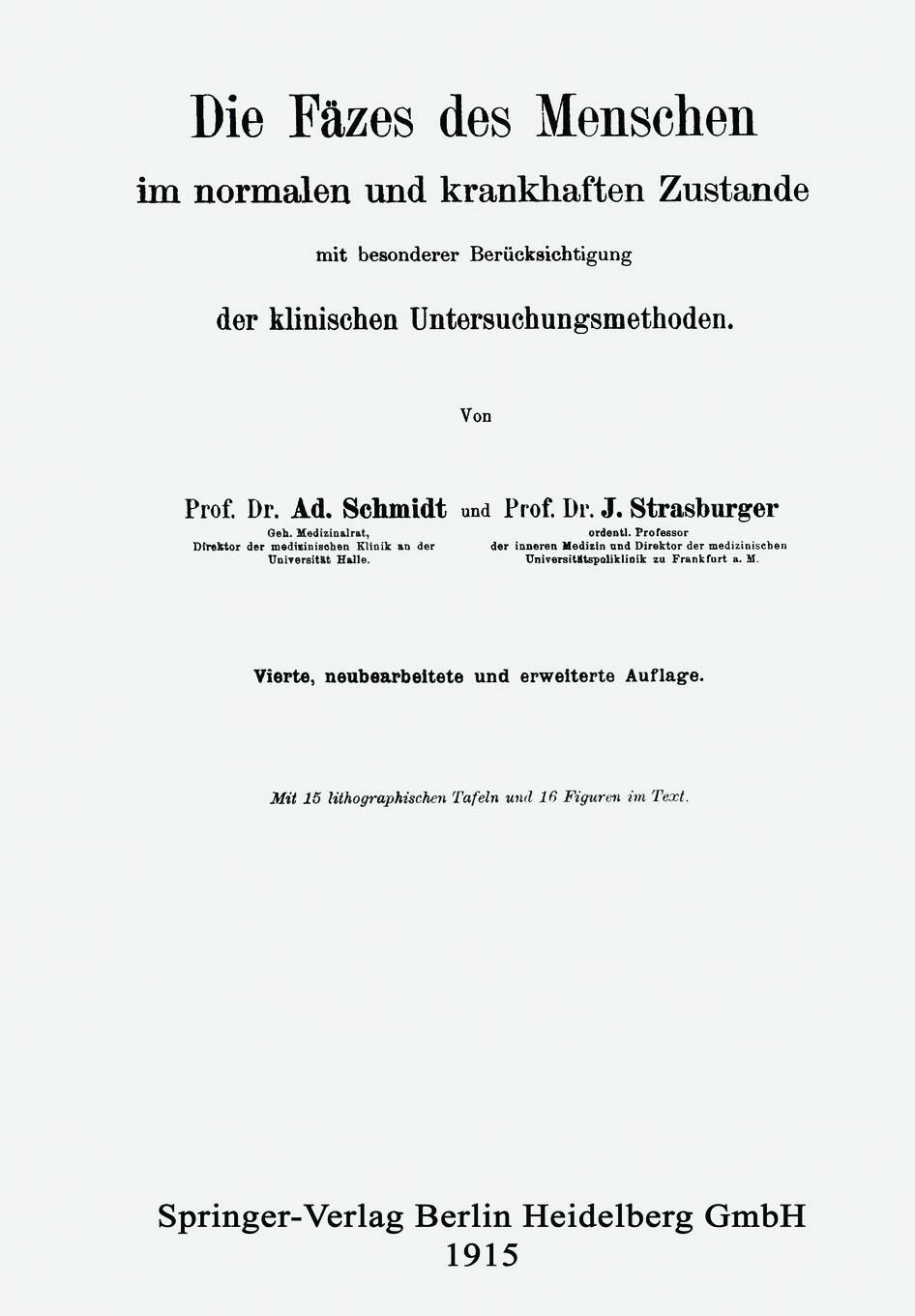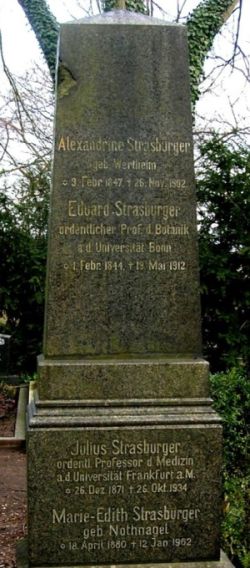Prof. Dr. med. Julius Strasburger
- Jena, 26.12.1871
- Königstein im Taunus, 26.10.1934
- Member since 1925
- Frankfurt am Main
- Specialist in internal medicine
Julius Strasburger was born as the son of the botanist Eduard Strasburger and the pianist Alexandrine Strasburger, née Wertheim. His father first taught in Jena, and from 1880 until his death at the University of Bonn.
“I first received private lessons here [in Bonn] and in 1884 joined fourth grade of the Bonn Gymnasium (“Untertertia”), from which I graduated on Easter 1890 with my school-leaving certificate. I then devoted myself to the study of medicine in Bonn and passed the preliminary medical examination here on 16 February 1892. I studied in Berlin in the winter of 1892/93. I continued my studies in Freiburg the following summer and then returned to Bonn. I passed the examination rigorosum on 16 February 1894, Strasburger states in his dissertation.
Education and Workplaces
Strasburger wrote his doctoral thesis on: “Die Sarcome des Dickdarms”. He passed the medical state examination in Bonn at the beginning of 1895 and received his licence to practise medicine in March of the same year.
He first worked as a trainee assistant at the II Medical Clinic of the Charité in Berlin under Carl Gerhardt after completing his studies. He worked as an assistant physician at the Bonn Medical University Clinic under Friedrich Schultze from 1896. In Bonn, Strasburger and the senior physician Adolf Schmidt (1865 – 1918), developed a close scientific collaboration focussing on the physiology and pathology of the intestine and digestion. They collaborated closely until Schmidt left for Dresden-Friedrichstadt in 1902. There was hardly any research on the function and diseases of the small and large intestine at the time. Schmidt and Strasburger extended the studies on intestinal pathology that the Viennese internist Hermann Nothnagel (1841 – 1905) had carried out and summarised in a fundamental work in 1884. For Schmidt and Strasburger, the functional examinations of the intestine were in the foreground. For this purpose, they developed a special sample diet (Schmidt-Strasburger sample diet) in conjunction with careful stool examinations.
Strasburger habilitated in internal medicine at the University of Bonn in 1899 at the age of 28 with the thesis “Weitere Untersuchungen über Fäzesgärung nebst allgemeinen Bemerkungen über das diastatische Ferment im menschlichen Stuhle” and was awarded the venia legendi. He headed the Department of Physical Therapy at the Medical University Clinic in Bonn from 1903. He was appointed “Titularprofessor” (senior lecturer) in Bonn in 1906.
Julius Strasburger married Marie-Edith Nothnagel (1880 – 1962), the daughter of the Viennese internist and clinician Hermann Nothnagel, in 1902. Nothnagel was publicly involved in the fight against anti-Semitism in Vienna.
Strasburger was a member of the editorial board of the Archiv für Verdauungs- und Stoffwechselkrankheiten (“Boas Archiv”) from 1909 until his death in 1934. He was a member of the advisory committee of the professional society (D)GVS from 1925 to 1933.
He was appointed as Richard Stern’s successor at the University of Breslau, now Wrocław, in October 1911, where he took over the management of the Medical Polyclinic and received a non-tenured associate professorship at the faculty of medicine. Richard Stern died at the age of 45 in February 1911 (Stern was the grandfather of the well-known German-American historian Fritz Stern, who had to flee with his family from Germany to the USA in September 1938). Due to structural changes following Stern’s death, the Wroclaw Medical Polyclinic, and with it Strasburger, was placed under the overall management of the medical director of the Wroclaw University Medical Clinic, Oskar Minkowski.
Julius Strasburger was appointed to the University of Frankfurt, which was in the process of being founded, and took over the management of the newly established Medical Polyclinic and the new Institute for Physical Therapy (Frankfurt Therapeutic Centre) at the beginning of May 1913. Strasburger was appointed full professor of internal medicine at the Royal University of Frankfurt on 29 August 1914. For the winter semester 1914/15 he announced lectures and an examination course: “Medical Polyclinic”, which he held regularly henceforward, along with “Physical Therapy”, “Introduction to Internal Medicine” and a “Chemical Microscopy Course”.
Strasburger had been actively participating in the First World War as a staff physician from mobilisation and worked in field hospitals in France. He worked as a consultant internist in epidemic hospitals in Romania from the end of 1917. After the war, Strasburger continued his scientific work in Frankfurt on digestive pathology, dealt with questions of vascular tone and blood pressure amplitude and devoted himself to physical therapy, especially hydrotherapy. Strasburger made a significant contribution to the profile and good reputation of both the Medical Polyclinic and the Frankfurt Therapeutic Centre.
1933/1934
In connection with the Nazi “Law for the Restoration of the Professional Civil Service” of April 1933, Strasburger was also forced to provide so-called Aryan certification. His situation was aggravated by structural measures with a significant reduction in the number of beds at the Medical Polyclinic as well as denunciation. Strasburger’s maternal grandfather, the banker Julius Wertheim, had been born into a family of Jewish faith, but had converted to the Evangelical Lutheran faith in 1844, the year before his marriage.
Strasburger was retired on 28 September 1934 according to § 6 of the above-mentioned law (according to this paragraph, civil servants could be retired without giving reasons “in order to simplify administration”). The developments and the persecutions since the handover of power to the National Socialists in January 1933, as well as his own situation, put a heavy psychological strain on Strasburger.
Julius Strasburger died at a sanatorium in Königstein im Taunus at the age of 62 on 26 October 1934. He was buried in the Strasburger family grave in Bonn-Poppelsdorf.
[bild nr=5
Biography translated by Rachel Hinterthan-Nizan
Sources and Further Reading
Sources